Purchasing an electric bike is daunting, especially if your bike knowledge is limited. There is a lot of hype and many brands, often clamoring for attention. If you are in the market for your first e-bike, or know someone who is, I want to share what I have learned from buying and using a couple of popular models, including pitfalls to avoid.
This guide details essential features and some good brands, which should help you or a friend navigate the early stages of a search for a safe, dependable, practical e-bike.
I emphasize cargo models and brands like Tern, Xtracycle, Yuba, and Madsen for two reasons. A relatively inexpensive e-cargo bike is excellent for general use while still being capable of replacing most short car trips. And as a dad of three small kids (who love biking as much as I do), I want to provide useful information to other parents.
Your first electric bike ride is a flashbulb moment. They are wonderful machines. If you buy one, any worries you have about not using it will probably vanish quickly. But you might find, as I did when I took the plunge, that you wish your bike could do more and had certain features. I hope I can save you time and frustration. I am not an expert, but I have learned many things that would have been useful to know up front.
Default Picks: REI Co-Op Brand, Tern Quick Haul
REI is a great place to start your search for an e-bike. They sell reputable brands including Tern and their own Co-Op e-bikes, a brand I regularly recommend to folks.
If you just want to know a great bike for most people, the Tern Quick Haul for about $2,500 is excellent and a strong value. You can carry a kid on the back or a bunch of groceries, the bike is well made, Tern has an excellent reputation, many features are built in. It is basically the Honda Civic hatchback of e-bikes. I recommended a Quick Haul to a friend and she is very happy with it, seen above with a trailer she added to it.
I have a Tern myself, a secondhand, first-generation GSD (“get stuff done”). I freely admit that I think Tern stands apart, from design and engineering to how its cargo bikes perform and feel. Terns are worth the high price. A used Tern is a fabulous value.
Tern’s innovative cargo designs have proven influential, contributing to an era of lively e-bike competition. There is a big world out there with many excellent options.
Part 1: Cost, Types, Safety, & Features
Great E-Bikes Are Pricey, But You Can Buy Used
I wish I could tell you, dear reader, that how much money you spend on an electric bike does not matter, and that expensive brands are a waste of money. But that would be lying, and lying is a sin. Expect to spend in the range of $1,500 to $3,000 and up.
I saved thousands by purchasing both of our e-bikes secondhand. To me, that is the way to go, but you might have to be patient if you want a specific model. I found my Tern on a Facebook group before it was listed. Upway.co has nice refurbished e-bikes.
Buying a well-maintained secondhand e-bike from a high-end brand is a great strategy.
You can save a lot by buying a great used e-bike. Always keep that in mind.
That is almost enough to buy a decent used motorcycle (though an e-bike is much cheaper to run), but I would not want to spend much less and risk an unsafe or poorly built bike. $500 to $1,000 is the starting price range for a dependable bike without an electric motor. There are good electric bikes from direct-to-consumer (DTC) brands around $1,500. But navigating that market segment is tricky, and you can easily buy a piece of junk. I only want to recommend bikes that I am sure would be safe for my own family. Low-quality bikes will have problems that cost money to fix and shoddy parts that need to be replaced. You have to think beyond the initial purchase price.
E-Bikes Are Surprisingly Practical
Contra the critics, e-bikes truly are practical transportation. Rain will not damage a good e-bike (though check your model online; I personally prefer to stay dry and worry less about rust). An e-bike cannot go on a highway but around town it really will do most of what you would want a car to. And it will be about as fast. Storytime:
My daughter and I recently met some friends for a little concert in Alexandria, the city where I live. We biked, they drove. We decided to invite them over for dinner. The ride home was a bit less than two miles and uphill, with a few traffic lights. Firstborn and I headed home on our cargo bike while our friends drove, departing around the same time. And we ended up next to each other at an intersection near the house. I was held up a little waiting for an ambulance to pass, otherwise the bike might have beaten the car. I rode a bit faster than average but did not take any risks or run any red lights (something I have stopped doing on the advice of a friend and my wife). Our journey was safe despite limited bike infrastructure. I got a little sweaty but that was a plus for me as a dad who is always looking for time to exercise. I could have taken my time.
As a new electric bike owner, you will be surprised by how much you can accomplish.
Know Your Cuts of Meat Types of E-Bikes

The first e-bike we bought is a cruiser, basically designed for leisure, with limited features. A commuter or city e-bike has accessories like a cargo rack, lights, and often fenders. I quickly learned that utilitarian e-bikes are best for most people.
Cargo bikes come in many flavors. Longtail and midtail models are most like a traditional bike, with an elongated rear frame that can carry one or two — even three — children or, in some cases, an adult passenger. Many of these bikes have a rear rack that is compatible with one or two kid seats (often versions of the Thule Yepp). A bike designed to carry cargo will generally be heavier, but also stronger and tougher.
A Dutch-style box bike or bakfiets (“bach-feets”) has a big cargo box in front of the rider. It can carry more than a longtail, but is even heavier and more complex and expensive. (I personally have no interest in a bakfiets since I need a confidence-inspiring bike to navigate narrow sidewalks, traffic, and fairly steep hills where I live.)
A friend observes: “Bakfiets [are safe] in that they are far more visible and take up space if riding in mixed traffic. Downside is that they can make parking a pain … Great option if you have garage space and access to an off-street cycle path network.”
Some e-bikes have folding frames, which make them easy to fit in a car or RV. Their popularity belies major trade-offs of added weight, cost, and complexity. Few folding bikes feel anywhere near as stiff and sturdy as a bike with a non-folding frame. You should only buy a bike with a folding frame if you really need that feature. A folding bike without a motor might be the lighter, less expensive option you are looking for.
A few models like the Tern GSD and smaller HSD have a folding stem (the metal rod the handlebars attach to). Our GSD fits in the back of our Toyota Sienna minivan!
Fat tires wider than ~3.5 inches are popular on e-bikes (and acoustic bikes), but do not make sense outside of the sandy and snowy environments they were created for. Fat tires are heavy, taking more time to spin up and slow down, and expensive to replace. Beefy tires around 2.5 inches wide are common on e-bikes, especially cargo bikes that need stability. Beyond that you run into diminishing returns. Some cheap cargo models use extra-fat tires that act as suspension, but that adds considerable weight.
Notes on Speed & Safety
Lots of power is nice in specific situations, but you rarely need it. There are three semi-official classes of e-bikes, most widely defined as:
Class 1 - Motor assist up to 20 MPH, no assistance without pedaling.
Class 2 - Motor assist up to 20 MPH, can provide assistance without pedaling.
Class 3 - Motor assist up to 28 MPH, but not without pedaling*, more regulated.
*I have a prior-gen Class 3 bike with a throttle that does provide motor power from a standstill, without pedaling. The three classes are a general guide. Some localities restrict or ban Class 3 e-bikes, so check the laws where you live. The real point is that I use my Class 3 bike mostly the way I would a less powerful one. Going faster than 20 MPH for more than a couple of minutes makes my ears ring with wind noise.
Higher minimum speed, not top speed, defines the experience of e-biking. Being an experienced cyclist led me into a nasty crash on our first e-bike, because I did not slow down for a turn. My helmet saved me from a concussion. I then wrote an essay about e-bike safety. I realized that I should approach e-biking like riding a motorcycle.
Although the benefits outweigh the risks, electric bikes demand respect from their riders.
Buy a nice helmet and always wear it. MIPS, a patented helmet system designed to reduce certain types of rotational brain and spinal cord injuries, is probably worth paying a few extra dollars for, even though evidence for its effectiveness is mixed.
Essential Safety Features
The top e-bike safety feature is a reputable brand that uses name-brand components.
This is the reality of e-bikes being an immature and modestly regulated market. Less regulation means lower prices and more competition and innovation, but does require consumers to educate themselves and approach their purchase decisions with caution.
Reliability often comes down to the chain and gears, so just know these names: Juggernaut Shimano and their main competitor SRAM. Shimano is the top global maker of groupsets (components like shifters). SRAM is an innovative brand common on mountain bikes. Many nice e-bikes use Deore derailleurs and components, Shimano’s cheapest ‘nice’ mountain bike groupset. Shimano has a new entry-level range called CUES that partially replaced Deore and may find its way onto e-bikes.
Shifting gears is important on an e-bike. A rookie mistake is just selecting a higher power level without shifting down to climb a hill or accelerate. A human pedaling (limited torque, sustainable power around roughly 75 RPM) and an electric motor (high torque from 0 RPM) complement each other well. By shifting gears and pedaling efficiently, you will help your e-bike’s battery last much longer, letting you go farther.
Brands I recommend generally have the safety features listed below. Mirrors are an exception. Some brands sell an overpriced mirror accessory. Buy your own instead.
Other must-have safety features:
Powerful disc brakes - Know who makes your e-bike’s brakes. Tektro is the big name. A friend notes that mechanical discs are easy to maintain and often fine. Strong, consistent, easy to use hydraulic discs are the standard for cargo bikes. And yet, at least one Kevlar-encased, stainless steel exception proves the rule:
Mirror - Transforms the riding experience, especially around cars! I use this one.
Certified battery - Cheap ones explode. Name brands include Bosch, Shimano, and Samsung. Look for UL certification and other independent certifications.
High-quality motor - Cheap ones burn out. I trust name brands (Bosch, Shimano, Bafang) and self-branded motors from reputable e-bike makers like Xtracycle.
E-bike-specific tires - Designed for stability at high speeds and under heavy loads.
Thru axles - Not quick-release axles, which are less robust and feel less stable.
Lights - Most competitive e-bikes now have integrated lights, which is great.
Bell - More convenient and polite than yelling. May be required by local law.
Key Convenience Features:
Torque sensor - Provides smooth, instant power from the motor based on how hard you pedal. Now a common feature, supplanting crude cadence sensors which kick in with a jolt and yield a constant amount of power regardless of pedal effort.
Frame-mounted cargo rack - Usually at the rear, up front in some designs. A backpack works in a pinch but can be fatiguing and unstable (“not to mention back sweat, and being in your kid's face if they're on a rear-mounted seat,” a friend adds). You will want to be able to carry cargo on your e-bike in a basket or pannier (saddlebag). A front basket that moves with the handlebars can make a bike harder to control.
Numerical range indicator - Now a common feature, missing from our first bike.
Fenders - Shields your bike from debris and puddles, even if you avoid rain. I would not want an expensive e-bike without fenders to protect the chain from grit.
Phone mount - Many options out there. I use this one, cheap and works fine.
Suspension seat post - Expensive at around $200 but having one on our Tern thanks to the previous owner is a huge plus for my fatherhood-induced back pain. It makes long rides far more pleasant and may give me better control of the bike.
What About A Suspension Fork?
I understand why some people want a suspension fork, or think they do, but a cheap one is worse than none, and even a nice one will affect handling. I would honestly rather have a suspension seatpost. And I like the feedback of a solid fork.
Accessories Add Cost, Especially to Cargo Bikes
A downside of high-end brands, and benefit of buying used, is that accessories, especially for cargo bikes, add hundreds of dollars of cost. These include essentials like seating pads, footboards, and cargo racks. Discounts and sales often entail free accessories. Depending on how crafty or handy you are, there are workarounds. Many bike nuts insist that an old egg crate is the best bike basket.
Comment below if I did not mention an e-bike feature that you think is important.
Hub Motors vs. Mid-Drive Motors
A point of contention and, at times, snobbery among e-bike enthusiasts is the relative merits of hub motors and mid-drive motors. A hub motor is a fat black cylinder integrated into the rear wheel (typically with gear reduction to boost torque). Mid-drive motors are more expensive and more likely to be a recognizable brand.
Mid-drive fans point out that, along with the benefits of being fancy, a crank-mounted motor enjoys the same mechanical advantage of the gears and chain as the human pedaler, making it more efficient. A good mid-drive has a smooth, seamless feel. Centralizing motor weight down low improves handling too.
However, hub motors have advantages that go beyond lower cost. A big pro is that they do not put additional force on the chain, helping it last longer. Hubs also work if the chain breaks. Moreover, power delivery is a matter of taste. Some riders like the surging feeling of a hub motor and its torquey delivery. Throttles are much more common on hub-driven bikes, though a responsive torque sensor is really all you need.
Notes on Storage Plus A Good Lock I Use
Bikes take up considerable space, especially big cargo bikes. Many e-bikes are too heavy to hang up. Some models can be stored upright, sitting on the rear frame, but you have to try it for yourself. Our Tern has this feature, though the kid bars interfere.
I definitely recommend playing around with the excellent cargo bike size comparison tool bikes.louiseveillard.com to get a sense of how long and big different models are.
The big question is whether you have a garage or sturdy shed. Otherwise storage is tough. You might not be able to haul a cargo bike up stairs or fit it in an elevator. An e-bike light enough to carry either is very expensive or has a puny battery and motor. Secure storage is a huge issue for city dwellers who would benefit most from e-bikes.
I do not think I would be willing to leave my Tern unattended in DC. If you live in an area where theft is a real problem, you should consider a bike’s desirability to thieves.
A lock is essential, but you must understand that it is a deterrent. Even as he picks it in about a minute, the viral LockPickingLawyer recommends this chain lock, as did an experienced friend. Thieves can quickly cut a U-lock with a battery angle grinder. A chain is harder to hold in place, so cutting one takes much longer. Lock picking is a learnable skill, but if you get really good, I doubt stealing bikes is worth your time. My Kryptonite chain lock weighs about ten pounds. I store it in the center of my Tern.
What About Trailers?
You can add a trailer and the capability that comes with it for $300 or less to almost any bike. Popular models carry two kids and about 100 pounds. We have a Burley Bee, the lightest, most affordable high-quality trailer (at least when we bought it). I like it a lot, but a few things drew me to a cargo bike. Our trailer takes up storage space, unless we fold it, which takes time. Hitching and unhitching the trailer takes time and is a moderate hassle, but maneuvering a bike with the trailer attached is comically impractical. If you have to ride on sidewalks, as we do, you end up in a very narrow horizontal window, hoping a trailer wheel does not get caught on a curb or signpost. And hearing and monitoring one or two kids in a trailer is difficult, which can lead to squabbles. Balancing a cargo bike with a restless toddler on the back can be tricky too, but our kids were growing too large to comfortably fit in the trailer when we got the Tern. A trailer is a good option if you are on a budget and have extra space and nice riding paths.
Part 2: Electric (Cargo) Bike Brands
Brands That I Can Wholeheartedly Recommend
This list mostly focuses on cargo brands, on the theory that you will want to be able to carry a decent load on an e-bike. Especially if you are not an experienced cyclist, you have to try a bike before knowing if you should buy it. Each one feels different and has widely varying strengths and weaknesses. Some cargo bikes are heavy, around 100 lbs.
REI Co-Op
REI is a great place to buy e-bikes from the retailer’s own brand or others such as Tern. REI has a generous return policy, a co-op membership that grants 10% back in store credit, and many locations with competent mechanics for assembly and service.
REI’s in-house Co-Op brand has good e-bike models that offer name-brand components at a good value and the benefits of tight integration with REI. Its e-bike models come and go, but you can often find a nice deal as they liquidate inventory. Pictured above is a discontinued mini cargo model carrying my rather tall friend (and, he claims, ‘urban dad extraordinaire’ (fact check: true)).
REI Co-Op has become my go-to recommendation for people who want a decent e-bike at a decent price but have no idea where to start. You can get a nice Co-Op e-bike for less than $2,000 or $3,000. Co-Op has yet to offer a high-capacity e-cargo model.
In copious online research, three cargo-specific brands — Tern, Xtracycle, and Yuba — stood out because the companies have strong reputations earned over many years and bikes that balance capability, especially rear rack capacity, with good value, solid components, and, in most cases, reasonably light weight. They set the standard. You can pay a lot for a much less capable e-cargo bike.
Tern
I am biased as the proud owner of a gen1 Tern GSD (“get stuff done”). These bikes are hot commodities on the used market (listings only last a few days, I was lucky to find one through a Facebook group). Terns are also reputedly the most stolen bikes in DC.
My adulation for Tern will rub some of you the wrong way, but consider that my GSD weighs about 60 pounds without accessories, 10 or 20-plus pounds less than other cargo bikes that may or may not be able to safely do what this bike can. The GSD was developed and torture-tested to hit a maximum gross vehicle weight of 200 KG — 440 pounds. A small adult could ride a GSD with four more GSDs strapped to the back.
My GSD is probably my most prized possession. I was giddy to pay $3,100 for it with 800 miles on the clock and a raft of accessories. It is stiff and nimble. It feels like it was engineered like a car, not a bike, which is what Tern would have you believe.
The company makes a big deal about its testing and independent certification, which give me confidence in their engineering. In an interview, a Tern employee implied that some other brands just slap a weight rating on their cargo bikes without meaningfully testing the frames. Whatever other brands are doing, I know that Tern insists on careful engineering and brutal, mind-numbingly thorough testing.
Tern started as a folding bike company and its cargo bikes reflect that. Their cargo bikes are small, about the size of a regular bike. And Tern totally ignores the traditional two-triangle bike frame design. Its unorthodox design approach became influential. Early reviews of the GSD cautioned that its bizarre looks attract attention and are not for everyone. Since then, other brands have introduced bikes that clearly copy Tern, even including rear frame elements that allows for upright storage.
Tern is now on the second generation of GSD and smaller HSD, which itself is capable of carrying almost 200 lbs. out back. The Quick Haul Long was recently introduced as a more affordable option for carrying two kid seats ($3,800). Expect to pay $2,500 and up for a Tern cargo bike, and $4,500-plus for a second-gen GSD, plus accessories.
Xtracycle
These guys claim to have invented the cargo bike and they might be right. Most of their models are essentially traditional steel bikes on steroids, with elongated rear frames. This makes them tough and simple, but also less stiff than Tern's intricate space frames. I tried the Xtracycle RFA pictured above at an event and immediately started daydreaming about buying one. It felt like a regular bike in the best way. The RFA boasts small size and low weight (in line with a GSD). Its signature adjustable wheelbase is neat, though makes the rear axle mounts a little vulnerable to damage, according to a friend with an RFA that has had a few issues. The Swoop is a longtail model with a smaller rear wheel so the rear rack is lower to the ground. The Stoker is designed for trail use (and on sale around $4,000). All three models start around $5,000.
Xtracycle’s newest model, the Hopper, shown below, has an aluminum frame clearly inspired by the GSD, and a hub motor, throttle, and suspension seat post. It costs an extremely competitive $3,000 and weighs 85 lbs. including key accessories.
Yuba
Yuba is a popular maker of longtail e-cargo bikes, similar to Xtracycle, but likewise has begun offering its own GSD-like model, the Fastrack, pictured above. Its unique flexible rack system replaces traditional passenger running boards.
Yuba made its name with big, capable longtails like the Spicy Curry. The new fourth generation is shown below. Spicy Curries have lots of features and legions of fans.
Yuba has a somewhat weaker reputation for quality and customer service than Tern and Xtracycle, but is still an easy brand to recommend. They also have a well-regarded model with a front cargo box. Yuba’s e-cargo bikes run $3,000 to $6,000 and up. Their Kombi E5 model hits a low price with its compact size and modest components.
Madsen
The Madsen brand flies under the radar but multiple owners urged me to highlight it. The unusual Madsen longtail bucket bike has a total weight rating of 600 lbs., with room for four kids behind the rider. Madsen fans are fiercely loyal and say the company has great customer service. I know this is true because Madsen went the extra mile to help a close friend of mine sort out a bucket bike that he bought secondhand with malfunctioning electronics. That level of passion and dedication to customers is hard to find in any industry, even this one.
Expect to pay around $3,300 to almost $4,000 for an electric Madsen bucket bike.
Aventon
Aventon is a prominent DTC brand with a good reputation and decent products at a great price. Aventon’s cargo model, the Abound, shown below, is the cheapest true e-cargo bike I feel comfortable recommending. Aventon offers key Abound accessories as standard while often throwing in others for free. The design, with its large bolted on rear rack, was clearly inspired by the Tern HSD. The Abound’s rear rack has much less weight capacity, especially compared with the gen2 HSD. Reviewers like the bike a lot, though some note that its foldable stem can feel wobbly.
Expect to pay $2,000 to $3,000 for an Abound depending on discounts and accessories.
I purchased a barely used teal Aventon Pace 500 in the depths of the pandemic. The experience of identifying key features missing from this cruiser and adding various accessories, most notably a rack and basket, taught me a lot about e-bikes.
Our prior generation’s 750-watt hub motor (which peaks at 1,000 watts, more than 1 horsepower) will provide boost up to 28 MPH. It has a cadence sensor and is a bit of a wild ride when you are trying to make time. I can never quite shake the sense that the front fork is a little out of alignment with the handlebars, despite my efforts to correct it. And there is a notchy feeling at a certain point in each pedal stroke.
But the bike is robust and my cautious wife enjoys it. I sometimes wonder about replacing our Aventon with something nicer, but then I ride it and think that there is no need. We bought it used with 4 miles for about $1,400, which was a great value. I wish it were a little more refined, I wish I could see the range in miles, I wish I had bought a commuter instead of a cruiser. And yet, it is good. The flaws give it charm.
Legacy American Brands: Trek, Specialized, Cannondale
These are big American bike companies with long histories. They each offer a range of electric models, including cargo bikes, and are worth checking out. You will pay extra for the brand, but that might be a good investment. These are big companies with decades of experience. Trek has a large national network of physical stores.
Trek offers the high-end Fetch+ 2 longtail and Fetch+ 4 bakfiets with a huge cargo box. One of the biggest bike nerds I know bought a Fetch+ 4 for his young family.
The Specialized Globe Haul LT is a value-oriented, highly capable longtail, though a bit heavy. If you are on a budget but want a big new cargo bike, definitely check it out. The shorttail Globe Haul ST is popular though pricey for its limited capability.
The Cannondale Cargowagon Neo is a mid-priced midtail with Bosch mid-drive and fashionable design but limited weight capacity. If you have a bird tattoo, give it a look.
Urban Arrow
I do not know much about box bikes but this is basically the “it” brand. I tried one and got used to it pretty quickly but still prefer a bike with a traditional fork. The cargo bucket is dense foam, basically a giant bike helmet, designed to protect precious cargo in the event of a crash. We have city-dwelling friends who replaced a car with an Urban Arrow and are very happy. Expect to pay $7,000-plus for an Urban Arrow.
Bunch
The Bunch Bike is a beloved cargo trike that steers via a central pivot, feeling totally different from a normal bike. It can carry four kids in comfort though the total weight limit is surprisingly low at 350 lbs. Bunch Bikes cost $5,000 to $6,000 and up. A Bunch is very much a lifestyle choice but if you like it, you will really like it. Bunch sells a model aimed at preschools with seating for six small children.
Three Expensive Brands With Great Reputations:
Gazelle - Big Dutch firm building bikes since 1902. Elegant designs, nice commuters.
Riese & Müller - German, super expensive, advanced features and electronics.
Surly - Funky, proven steel frames, cult following, can be heavy, arguably overpriced.
What About Rad Power Bikes?
Rad is extremely popular and helped e-bikes go mainstream. The RadWagon, now in its fifth generation with many notable improvements and still-competitive pricing, is a common cargo bike pick. However, the company is currently climbing out of a PR crisis and has to prove its new designs are safe and built to last before I can endorse it.
Rad bikes until recently used flimsy quick-release axles and failure-prone mechanical disc brakes. Many owners got entirely new brakes. The company will have to do a lot to regain public trust. Their new fifth generation of bikes places a big emphasis on safety, from hydraulic disc brakes and redesigned axles to a bespoke battery design.
Time will tell if Rad is on the right track.
What About Lectric?
You have likely seen a Lectric e-bike with its distinctive chunky square-tube frame. The brand is popular mostly because it is cheap. Lectric has made a big PR push in recent years, including polished television ads. Lectric should spend that money on building a good product instead. Lectric bikes are very heavy, with cheap components and shoddy build quality. They rattle and shudder. Buyers report new Lectric bikes with missing components and nagging quality issues. There is no excuse for that.
Especially with so many good options out there, and new ones debuting all the time, you should not give your business to Lectric. Instead, buy a nicer used bike, designed and built by a company that people can confidently endorse. Someone defending the brand called their Lectric bike bad in every way. Buy something good used instead.
Two Other Brands I Have Concerns About
In recent years KBO, which is allegedly a company that exists, has blown up social media with ads for an e-cargo bike touted as a discount Rad Power RagWagon.
A bike enthusiast I know bought a KBO cargo bike and shared this experience:
That was our first cargo bike. The first motor lasted 3,000 miles, but each replacement motor failed in less than 1,000 miles. From reading the forums my takeaway is that the rear hub housing was engineered with a flaw or lack of precision that made this motor failure issue near universal. The spokes would break weekly and by the end the motor failed 4 times. Other than that fatal flaw it was a decent cheap ebike. The kickstand broke twice as well, but that even happens on a Tern eventually. I rode it hard for about 5,500 miles in 11 months, and decided I loved e-cargo bikes because of it, but I would never recommend it to anyone. The company was okay to work with but you had to submit video footage, be hyper polite in your emails, pay $65 shipping and handling and wait 2 months for warranty parts to arrive from China. If you came across as frustrated or upset they would ghost you. I didn’t have this happen because I read the forums and was prepared. Still, not what you would hope for from customer service.
Pedego has a big lineup and serious retail footprint and happy, loyal owners, who I do not mean to offend, yet the bikes look and feel cheap, with thin frames. I rode a Pedego cargo bike the same day as the Xtracycle RFA and the difference was night and day. The Pedego was creaky and clumsy. Pedego bikes are not awful or dangerous, just mediocre. There are so many other fish in the sea, I would look elsewhere.
Brands That Look Fine, Suggested by Facebook Contacts
Benno - High-end, well-made e-bikes with a core focus on design and style.
Ride1Up - A popular, innovative DTC brand similar to Aventon. Worth checking out.
Momentum - Sub-brand of Giant, the biggest global bike maker. Attractive but pricey.
Liv - Another Giant sub-brand, aimed specifically at women.
Velotric - Another popular, value-oriented DTC brand. Has a cheap cargo model.
Ferla - Had not heard of this one. Sells a longtail and a box trike similar to the Bunch.
Bike Friday - Cool yet kooky, intriguing yet niche. Am including to humor my big bike nerd friend. Makes folding and cargo bikes. Based in Eugene, Oregon.
Parting Shot: Basic Maintenance
Here is basic maintenance advice I have gathered over time and aspire to follow, perhaps when my kids stop throwing food on the floor.
Regularly check tire pressure
Clean the chain every 6 to 12 months
Get brakes inspected every 12 months
Do not over-deplete or overcharge the battery
Store your battery out of the elements
Watch out for rust and frame damage
Do not overload a bike frame, it should never significantly flex, it could break
Silicone lubes repel water and rust, graphite lubes repel dirt and grit
I hope this information helps you find a great electric bike. Be safe and enjoy the ride.
Thanks to my 613 subscribers, especially my 10 paid subscribers. If you enjoy this blog or want to work together please contact lucagattonicelli@substack.com. Check out YIMBYs of Northern Virginia, the grassroots pro-housing organization I founded.



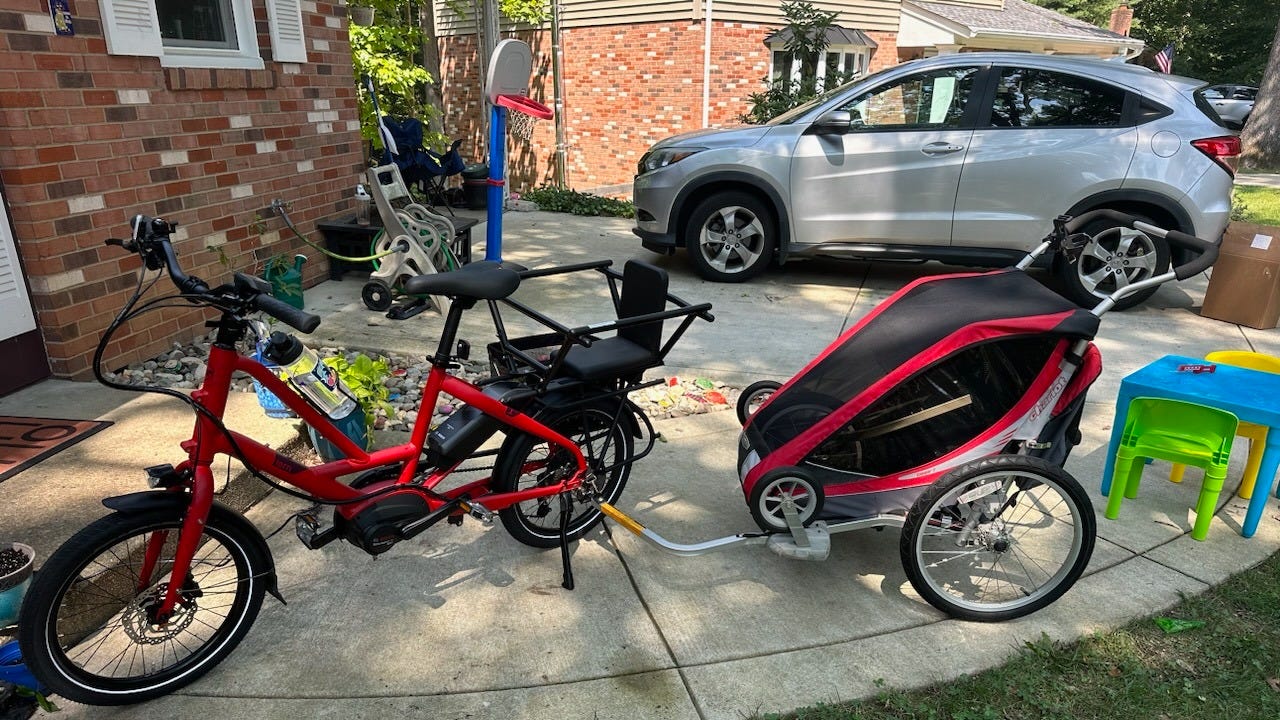
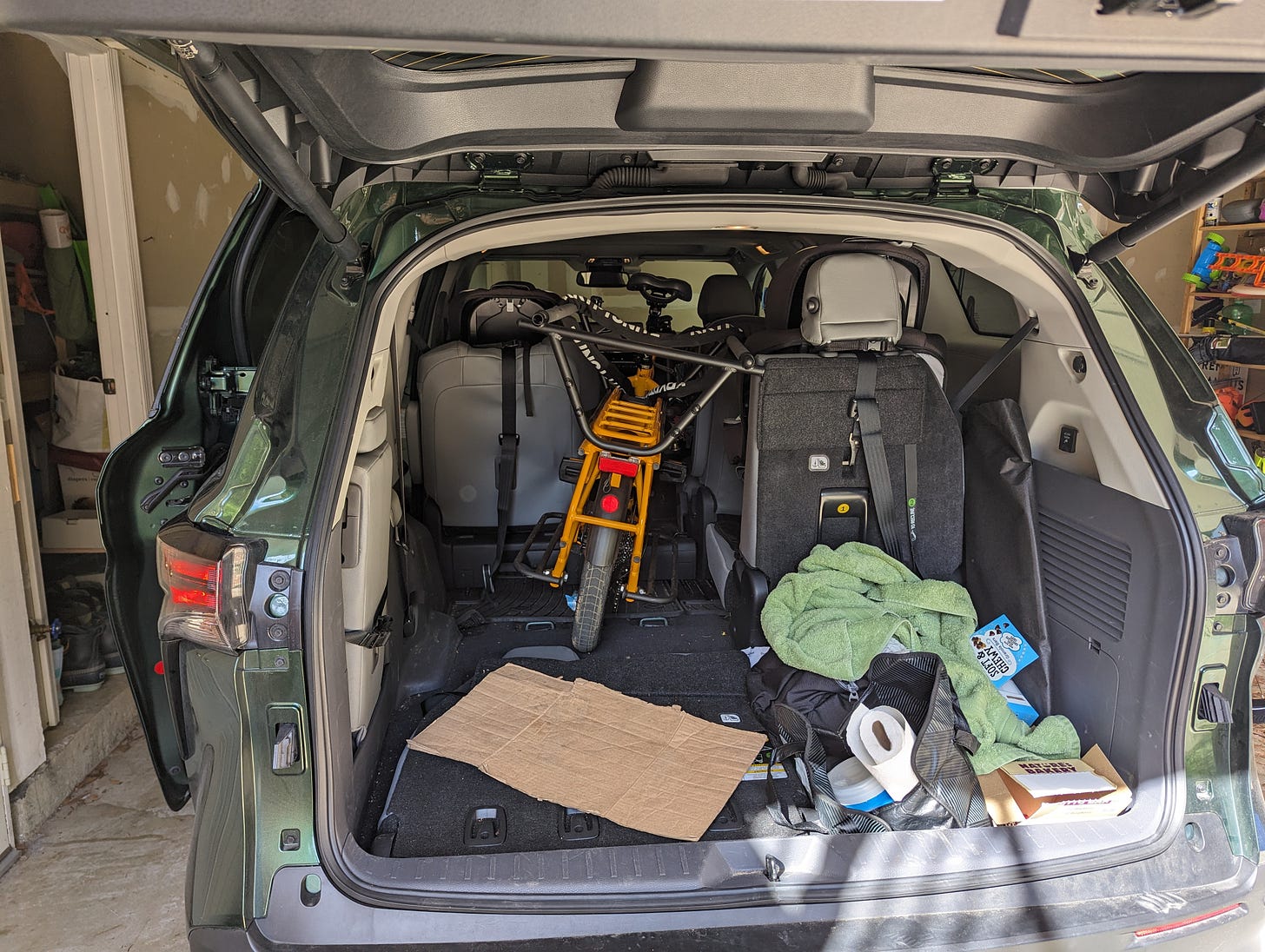
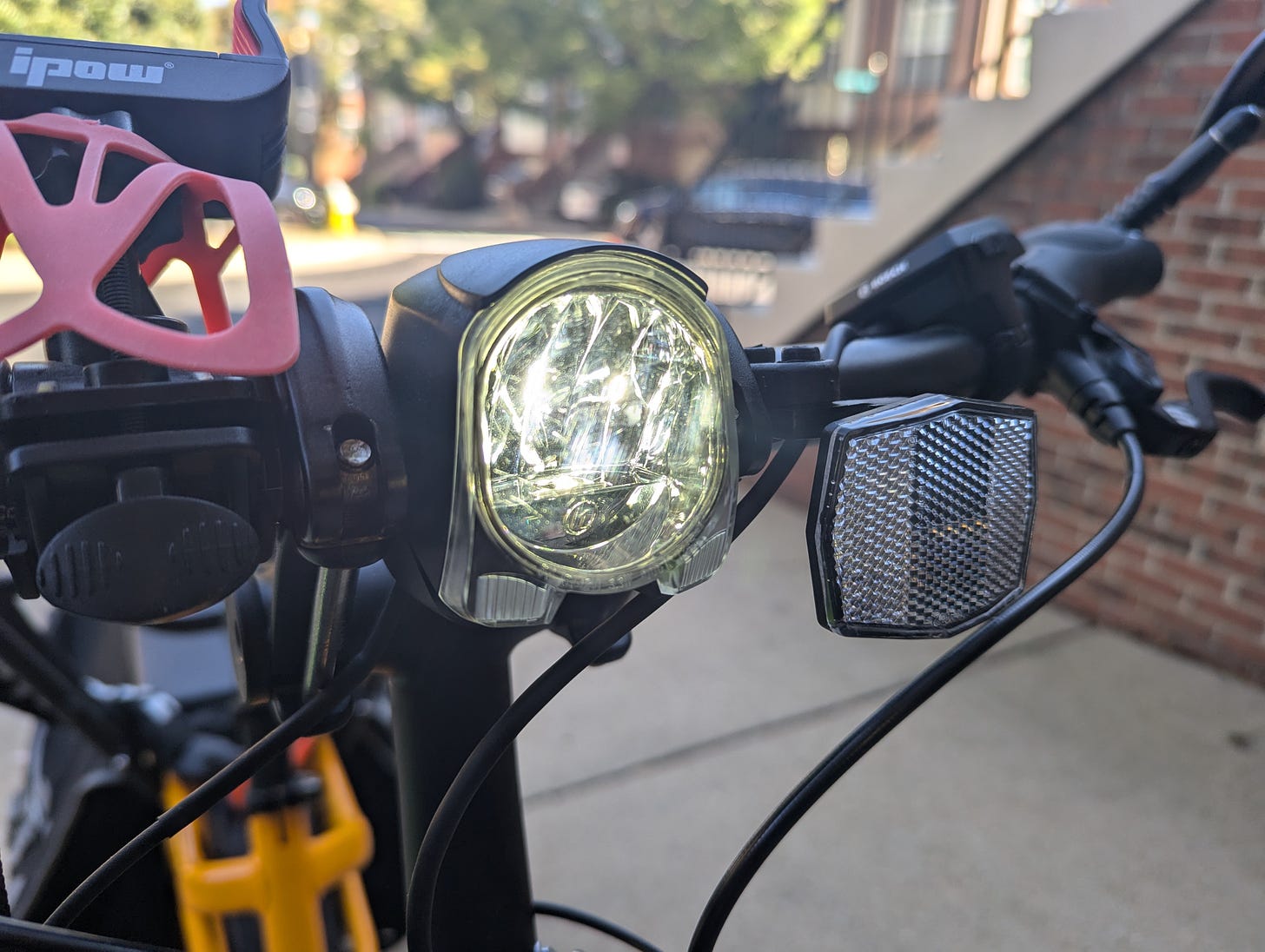
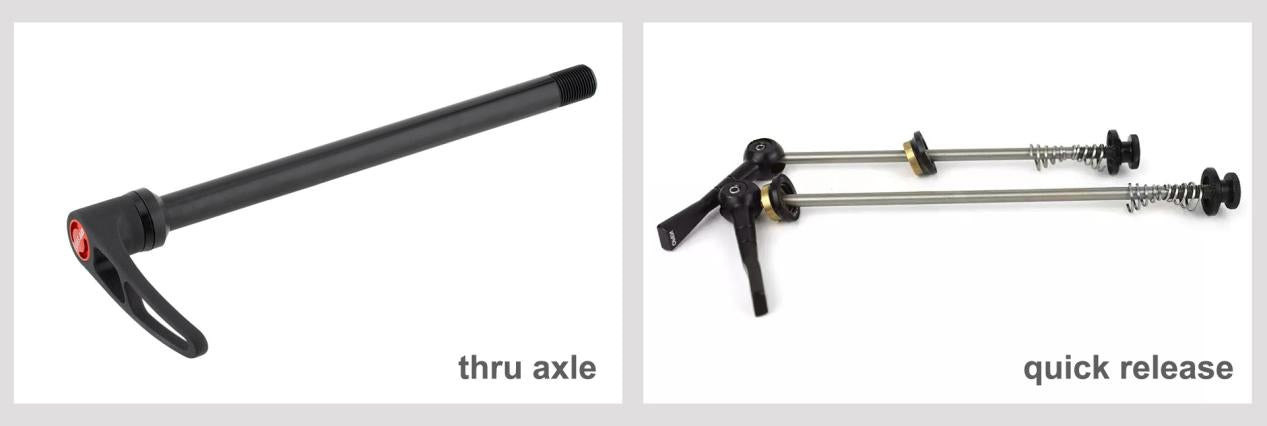
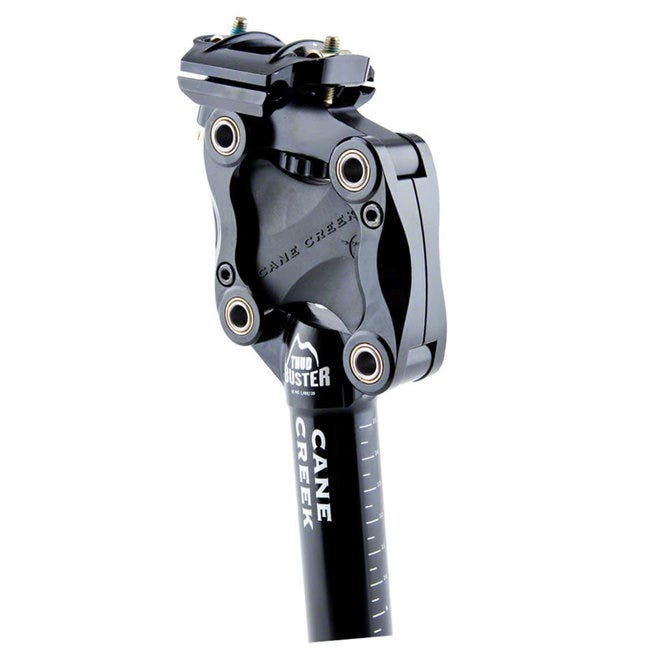
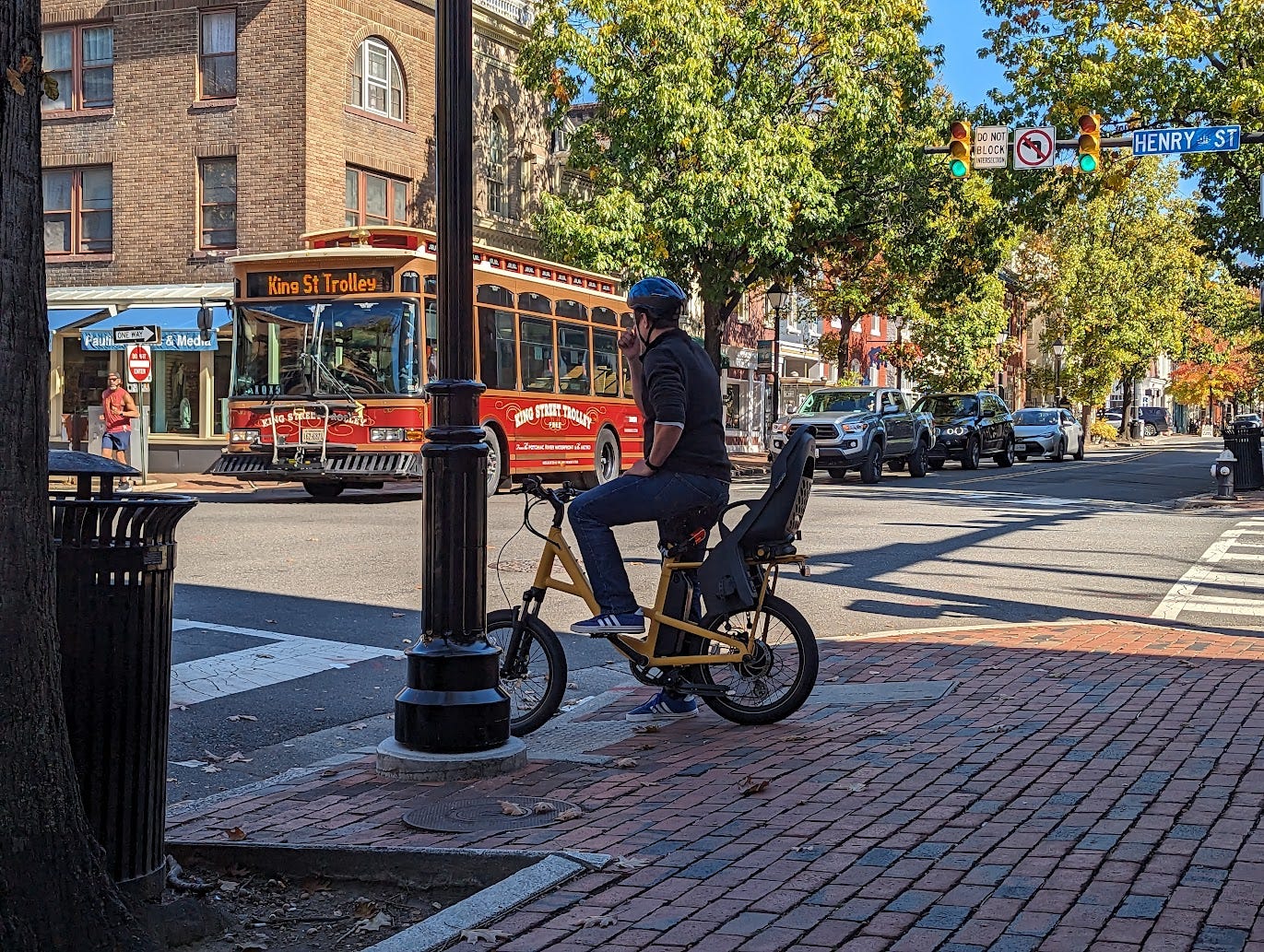

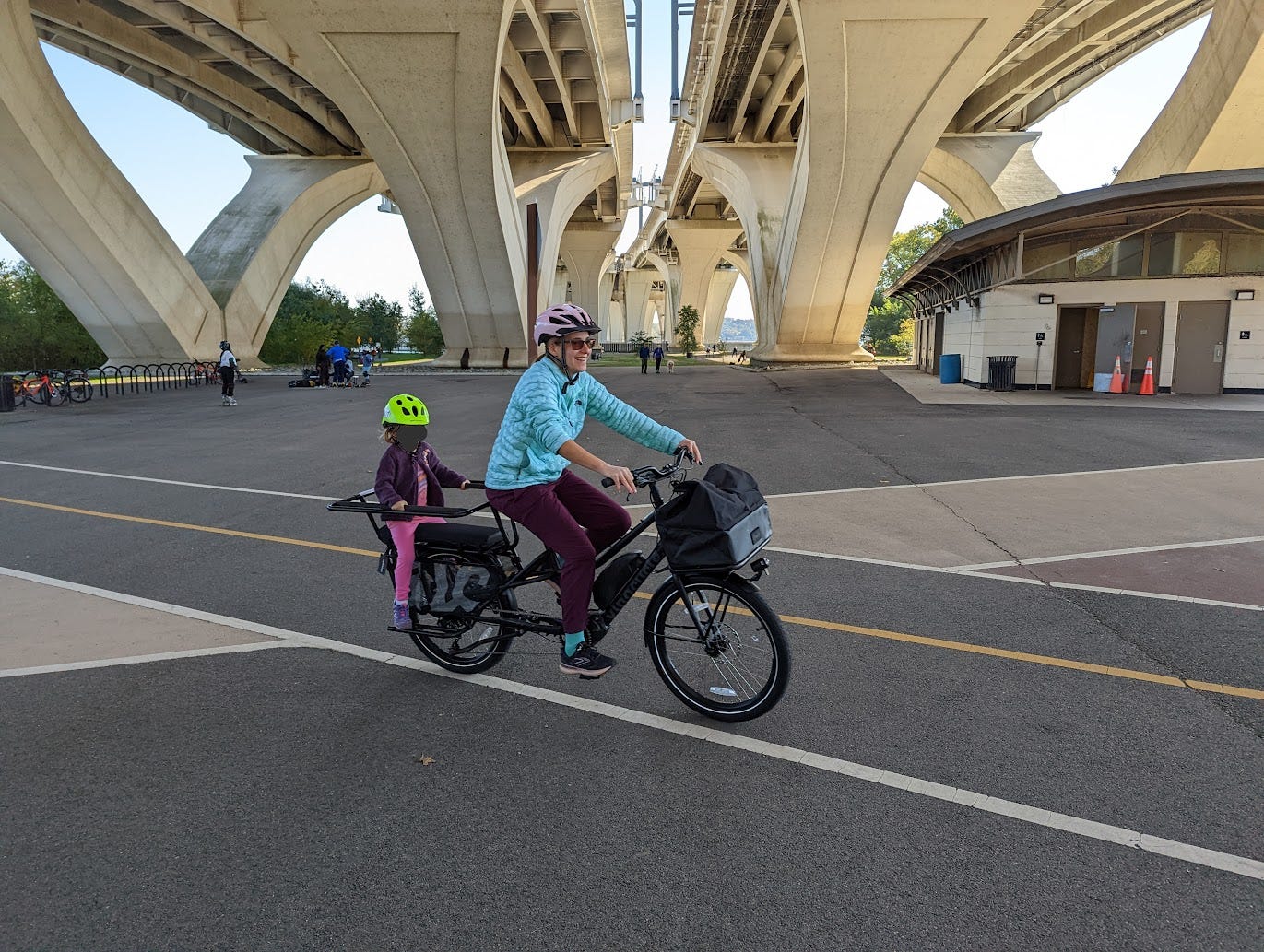


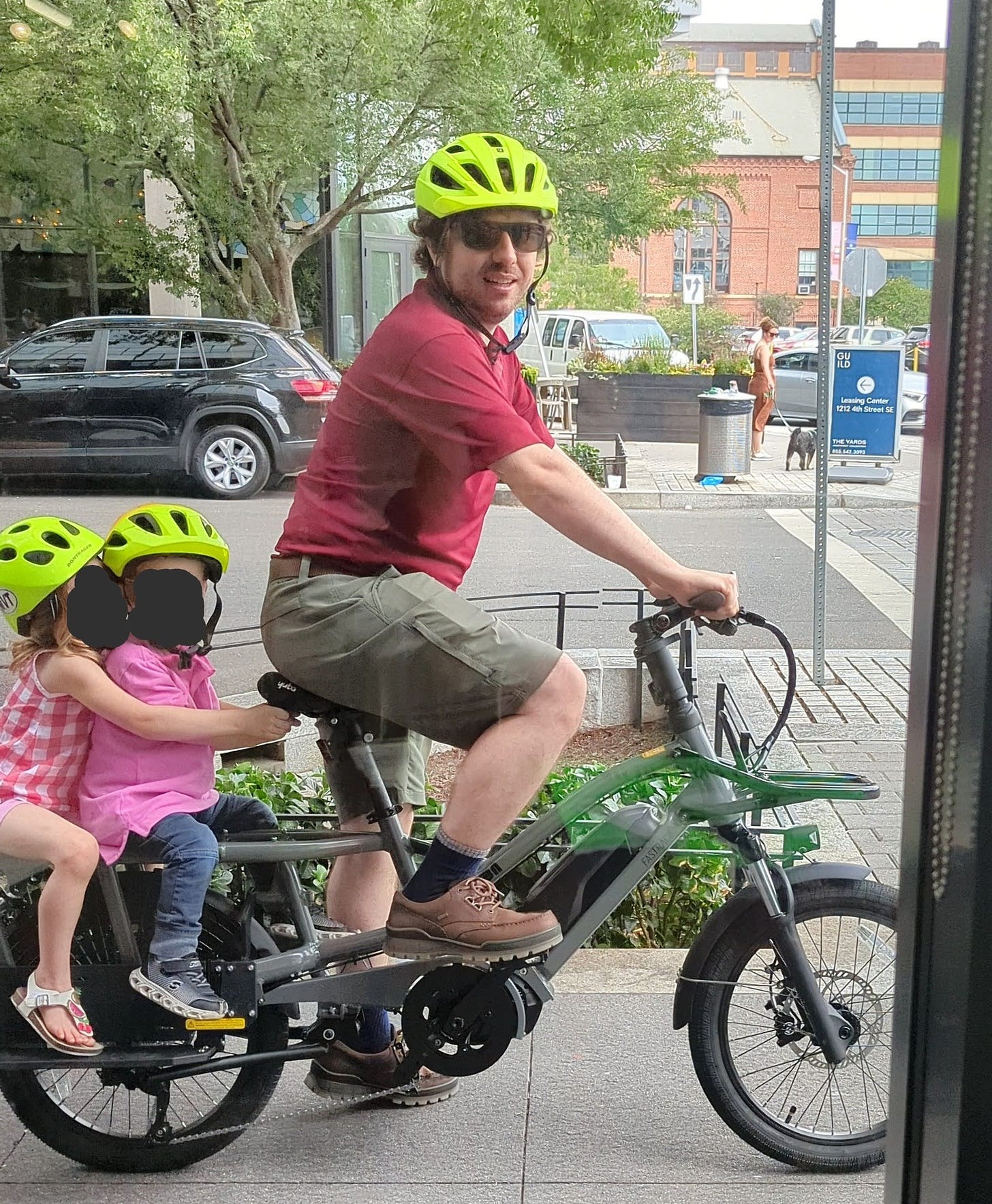
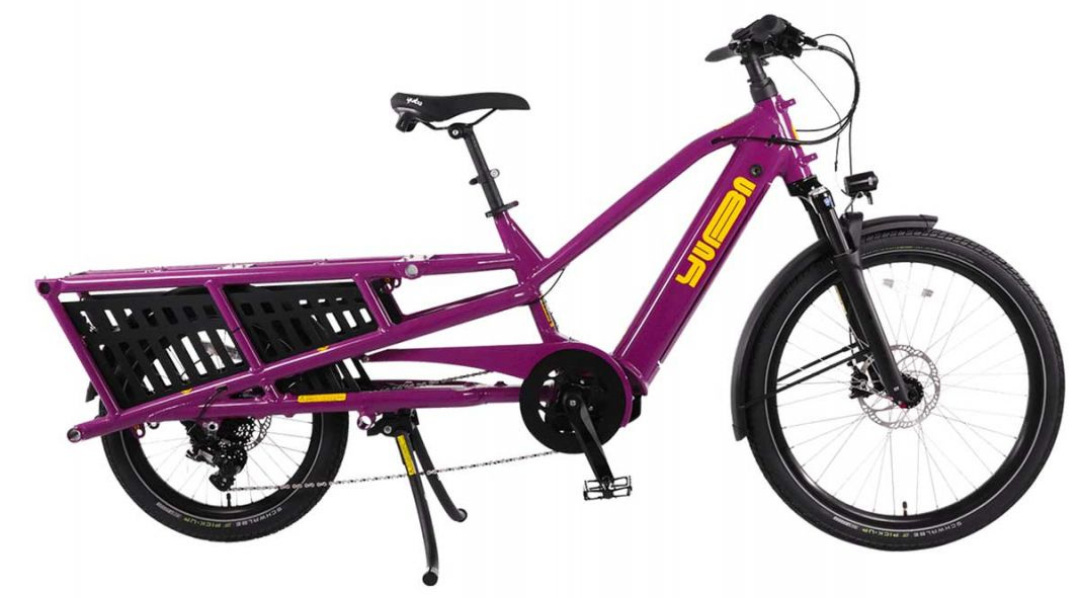
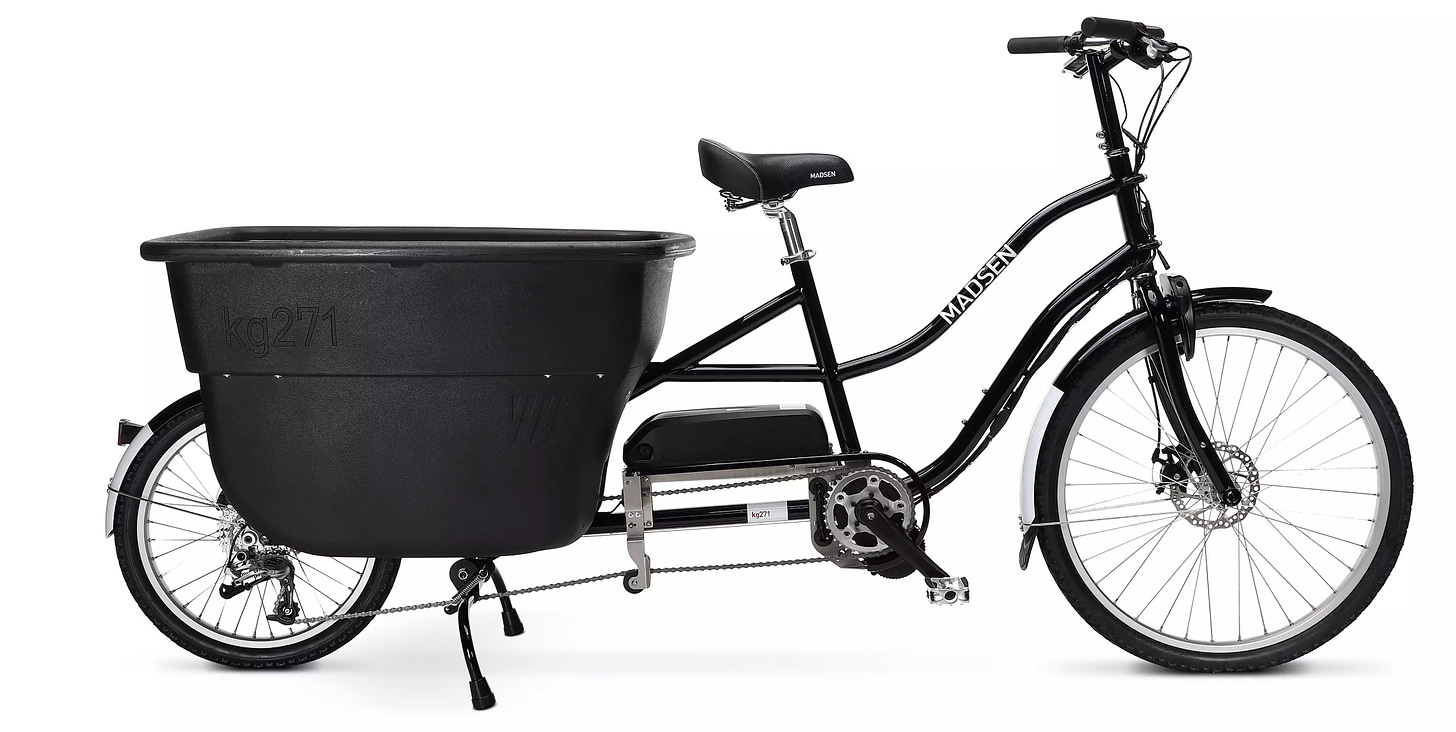
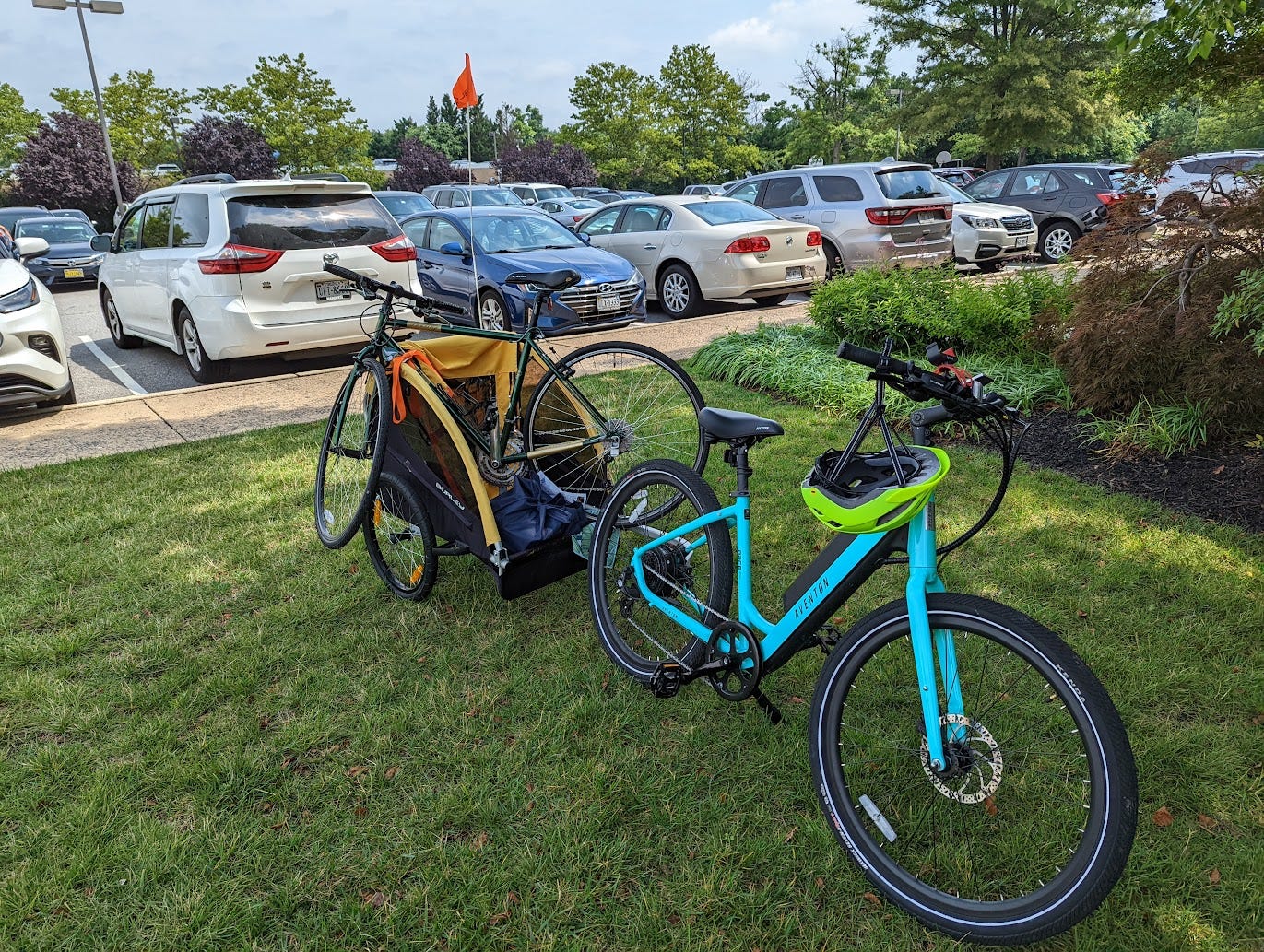
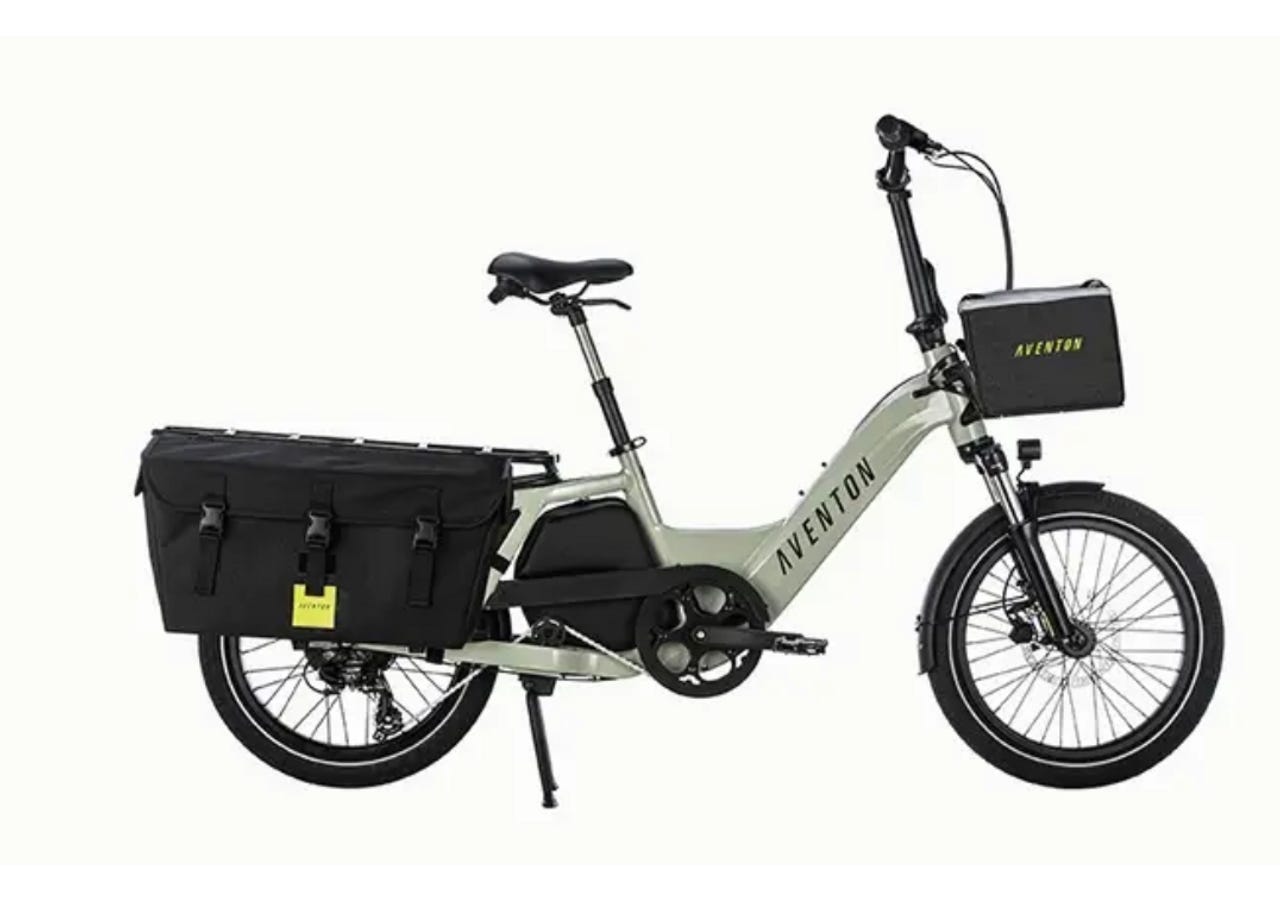
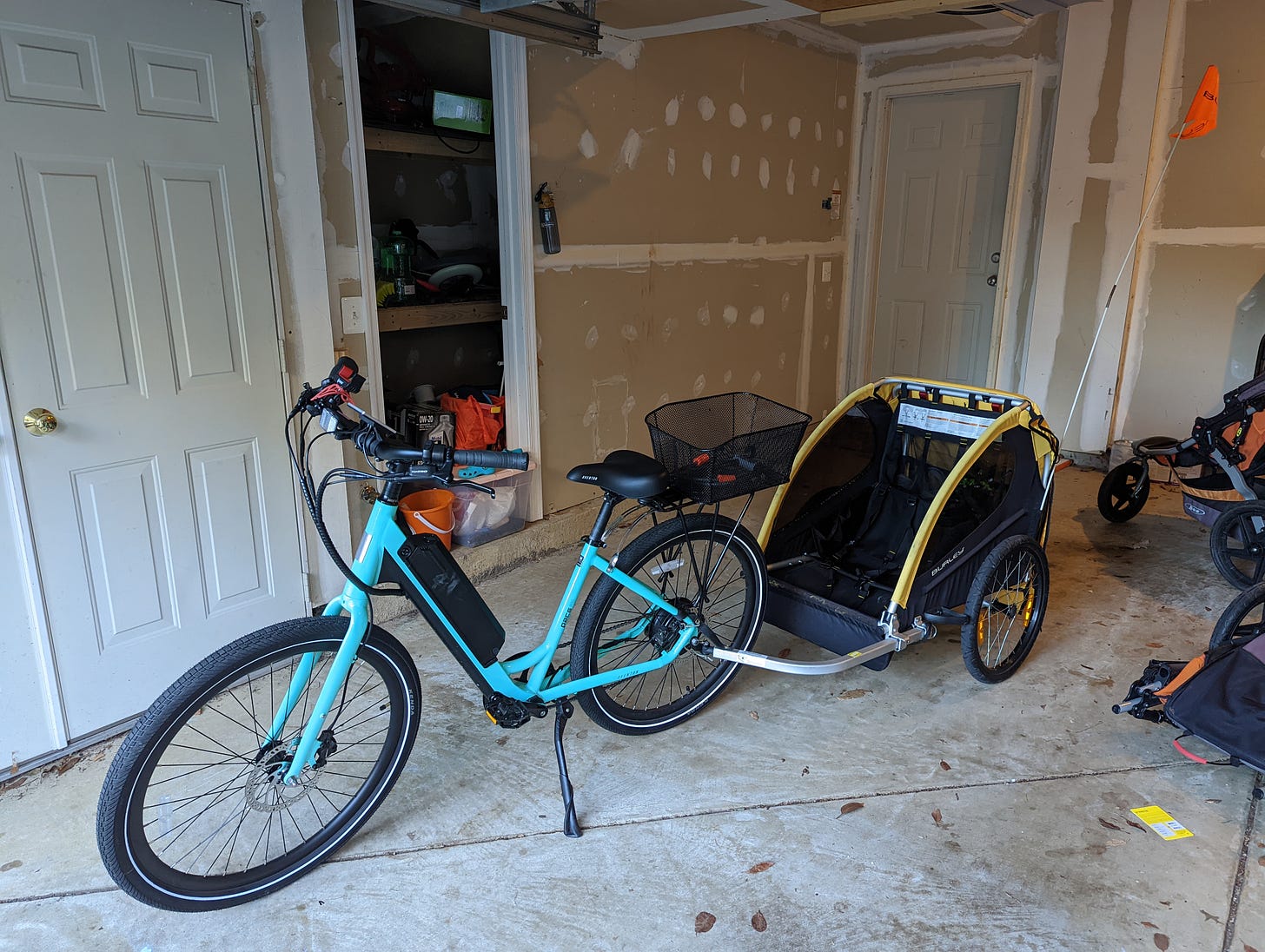
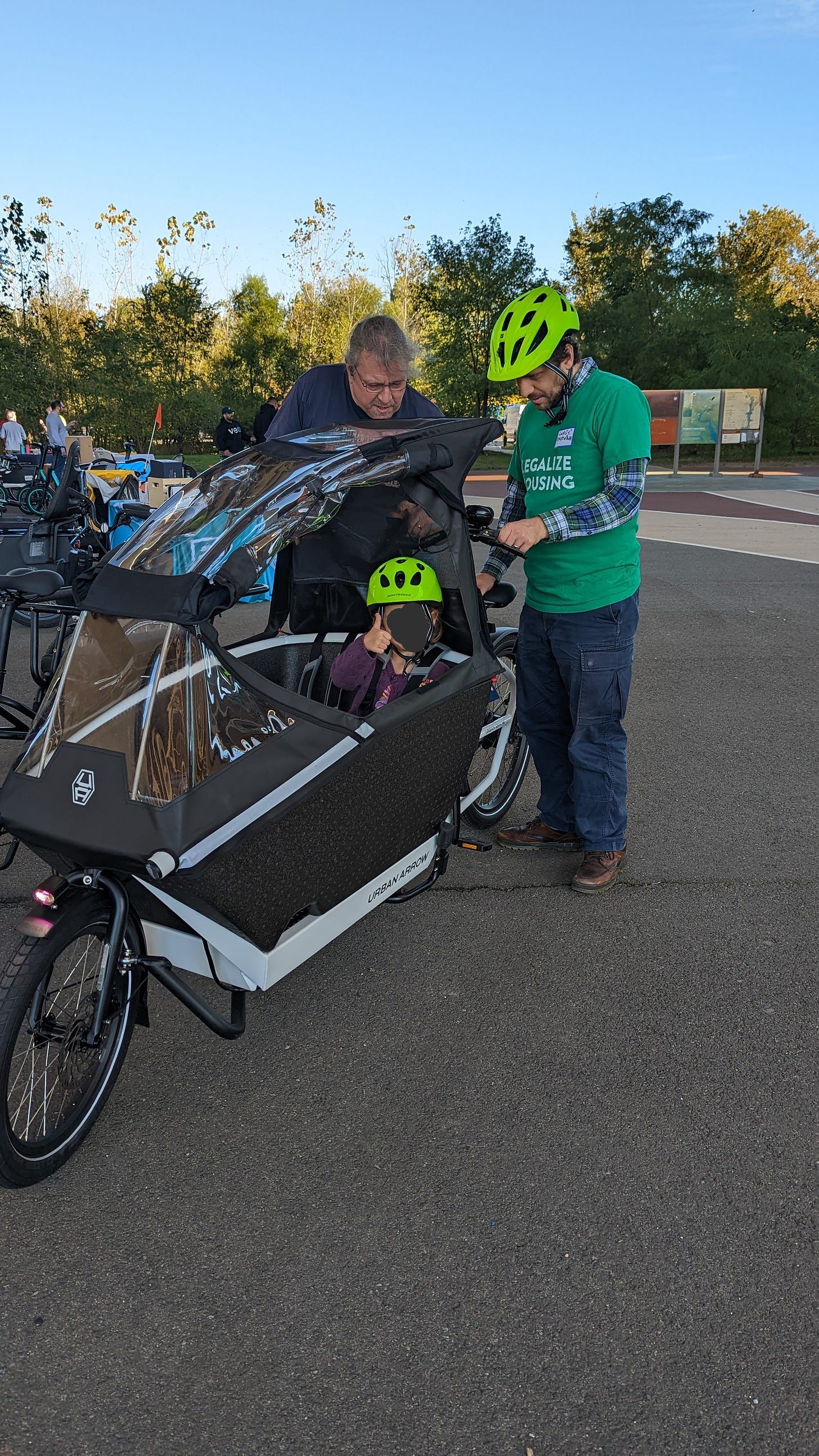

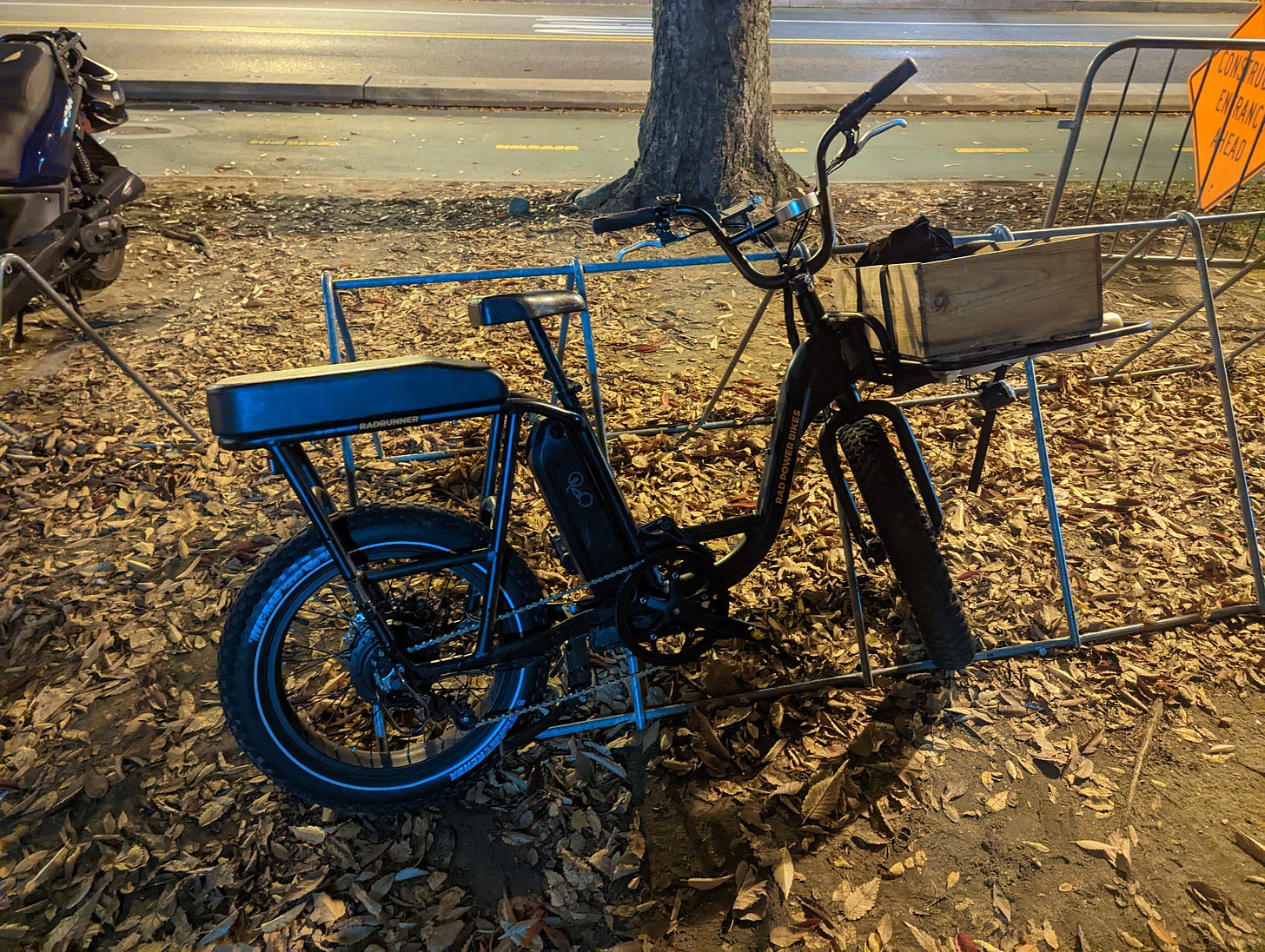
My friend who runs the Cambridge MA ebike library has one additional “try this” from an unexpected brand - the Rafio Flyer Via Pro! It’s another GSD-inspired bike at half the price, but they seem to have done a really nice job w build quality and ride feel.
Super helpful! Curious if you have any thoughts about Integral bikes? Their price point and pitch is appealing but wonder if they have some of the same flaws of other less-expensive bikes in your list